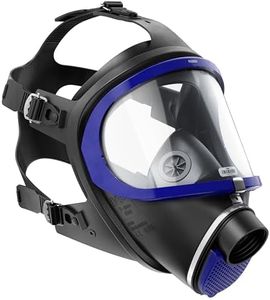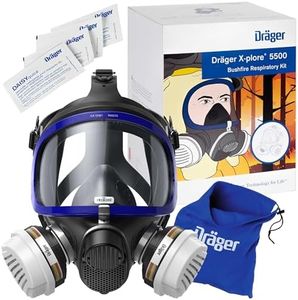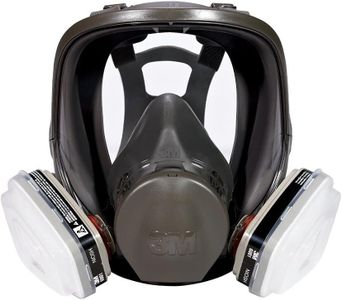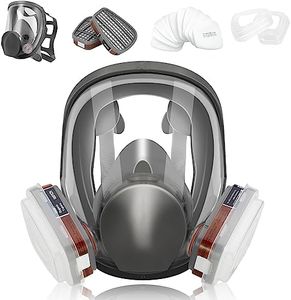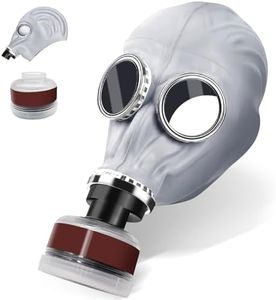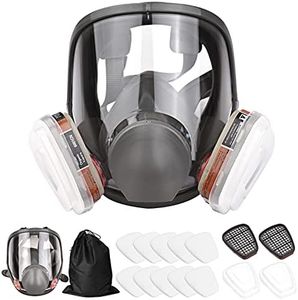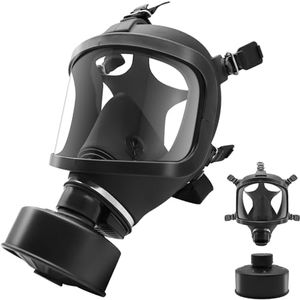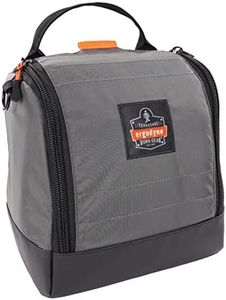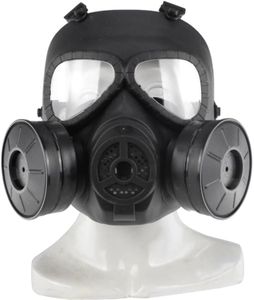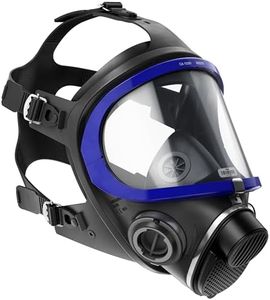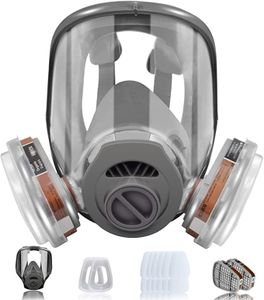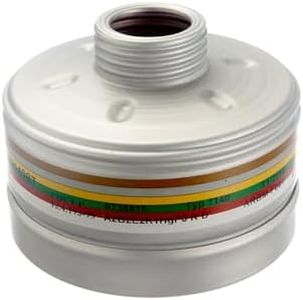We Use CookiesWe use cookies to enhance the security, performance,
functionality and for analytical and promotional activities. By continuing to browse this site you
are agreeing to our privacy policy
10 Best Full Face Respirators
From leading brands and best sellers available on the web.By clicking on a link to a third party's website, log data is shared with that third party.
Buying Guide for the Best Full Face Respirators
Choosing a full-face respirator is essential when you need strong protection for your lungs, eyes, and face against harmful gases, vapors, and particles. Unlike half-face masks, full-face respirators give you a seal over your entire face and shielding for your eyes. The best fit for you would depend on the hazards you face (like chemicals, dust, or biological threats), your comfort during use, and the typical environment in which you’ll be working. When comparing options, pay close attention to the essential features and decide what fits your needs, comfort, and the scope of protection required.Material and Build QualityMaterial and build quality refer to the type of plastics, rubbers, and seals used to make the mask. This is important because it determines how well the mask fits, how long it will last, and how comfortable it feels. Some respirators are made from soft silicone, which is more flexible and comfortable for long-term use, while others use harder plastics that can be less comfortable but more durable. If you plan to wear the mask for extended periods, choose one with softer, skin-friendly materials, but if you need it for occasional, demanding work, focus on durability.
Filter CompatibilityFilter compatibility is about what types of replacement filters the respirator can use. Some masks use brand-specific filters, while others accept a wider range. This is crucial because different filters are made for different hazards—some protect against dust, some against chemicals, and others against biological threats. Decide what hazards you face most often, and make sure the respirator you choose supports filters that can handle those threats. If your work environment changes often, pick a model with versatile filter options.
Face Seal and FitThe face seal determines how well the mask seals against your skin to keep out harmful substances. A good fit is critical because any gaps can let dangerous substances in. Masks usually come in various sizes and offer adjustable straps. For safety and comfort, look for a mask that matches your face shape and size, and offers easy ways to make small adjustments. If you have facial hair or glasses, ensure the seal can accommodate them or look for designs that are compatible with such features.
Lens Type and Field of ViewThe lens is the clear part you look through, and it’s important for both visibility and protection. Some lenses are scratch-resistant, have anti-fog coatings, or are made of impact-resistant materials. Field of view refers to how much you can see while wearing the respirator—wider lenses give you better peripheral vision, which increases both comfort and safety. If clarity and awareness of your surroundings matter for your work, pick a mask with a panoramic or wide-view lens and protective coatings.
Breathing ResistanceBreathing resistance means how hard you have to breathe while wearing the respirator. Lower resistance makes it easier and less tiring to wear the mask for a long time. Masks with high-quality valves and large surface area filters usually offer easier breathing. If you need to wear your respirator for hours at a stretch or during physical work, look for models that are known for low breathing resistance and efficient airflow.
Comfort FeaturesComfort features include padding, adjustable head straps, and overall mask weight. Lightweight respirators with soft padding are more comfortable for long periods, while well-designed straps help distribute weight evenly to reduce pressure points. If your workday is long or involves a lot of movement, prioritize comfort features to make it easier to keep your mask on for as long as necessary without discomfort.
Ease of Cleaning and MaintenanceCleaning and maintenance are about how easy it is to take apart, wash, and reassemble your respirator. Regular cleaning is important for both safety and durability. Some respirators are made with simple, quick-disassembly designs and easily washable parts. Choose a model that lets you clean it well and often, especially if you’ll be using it frequently or in dirty environments.

